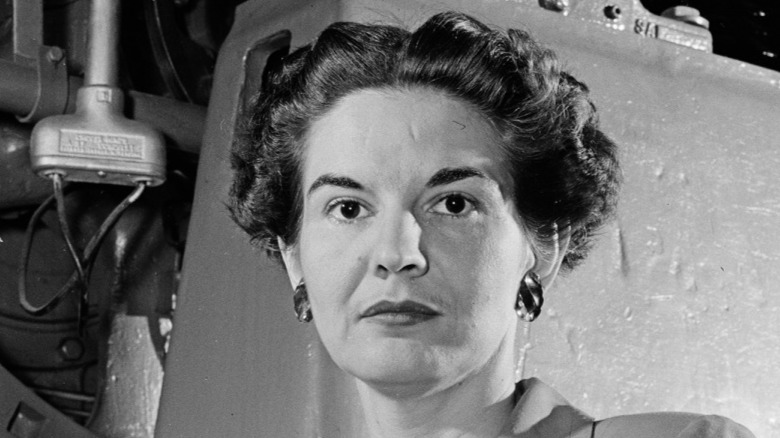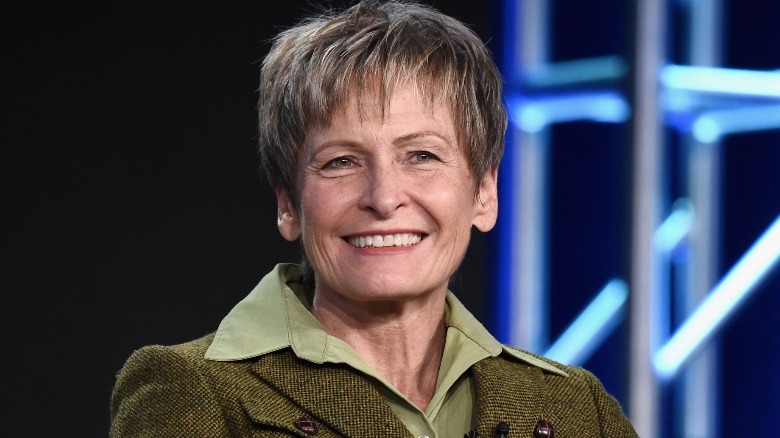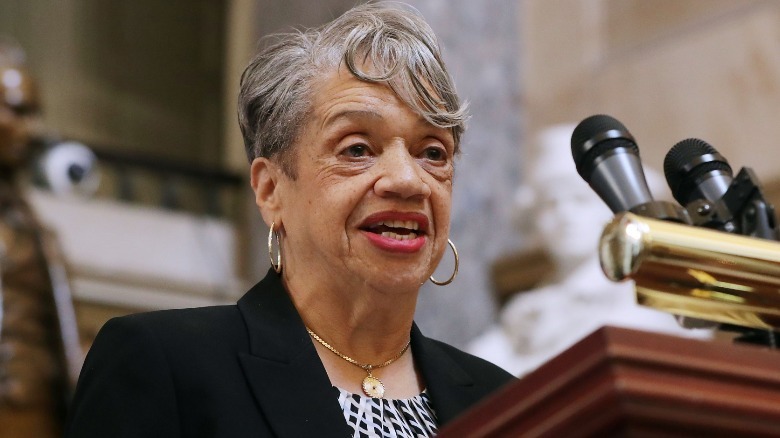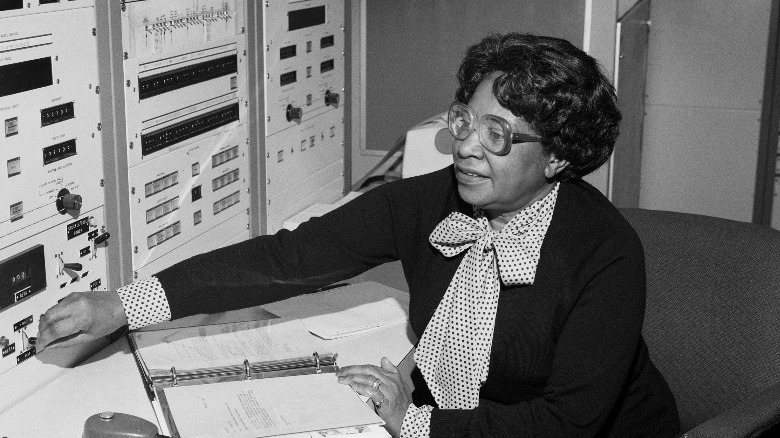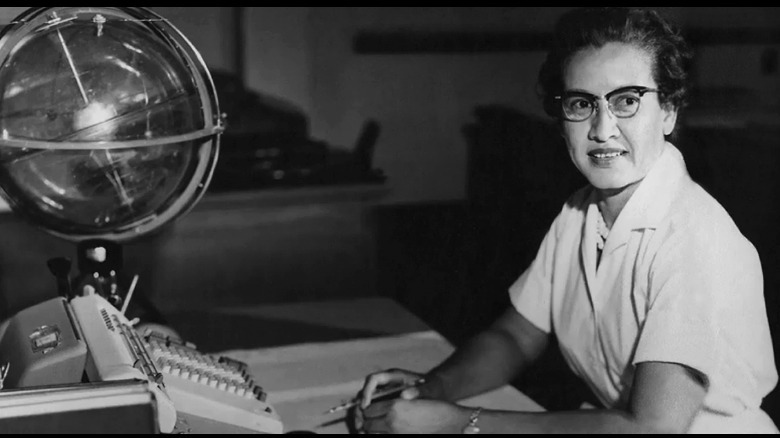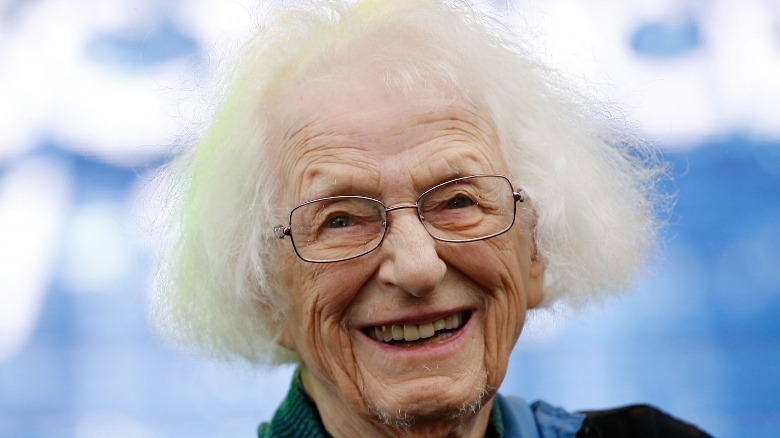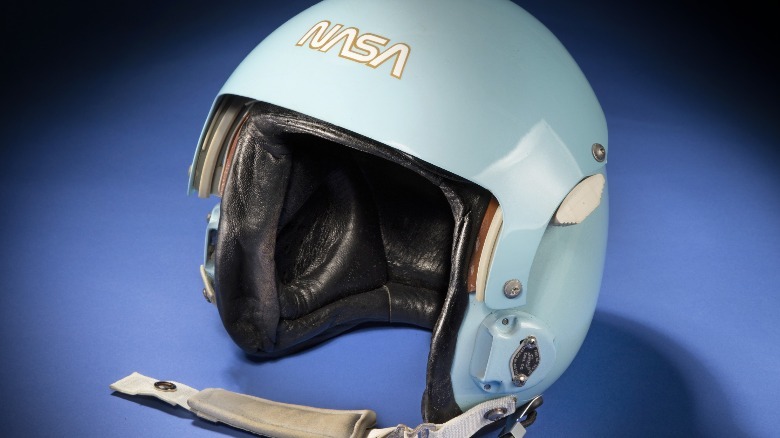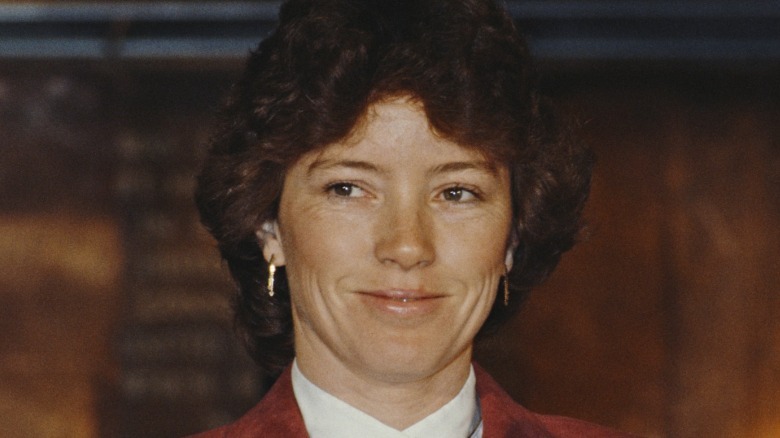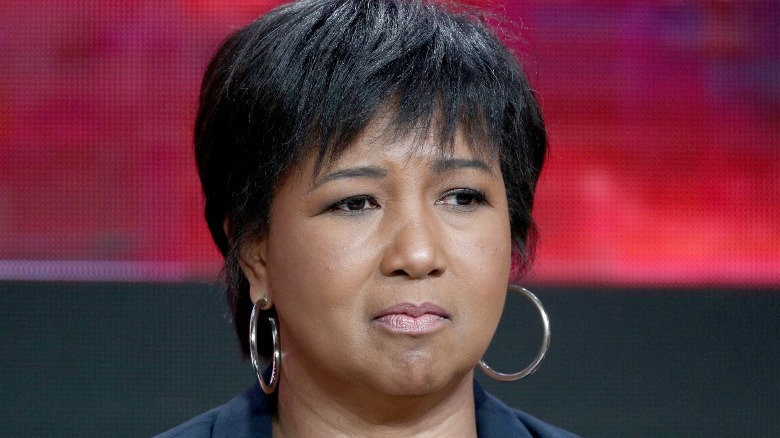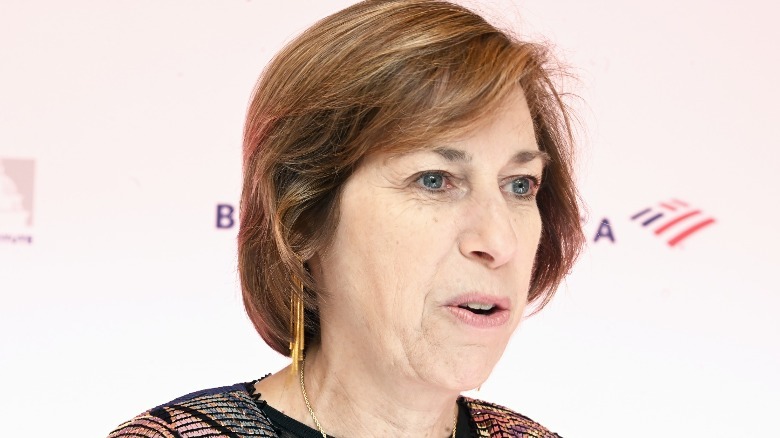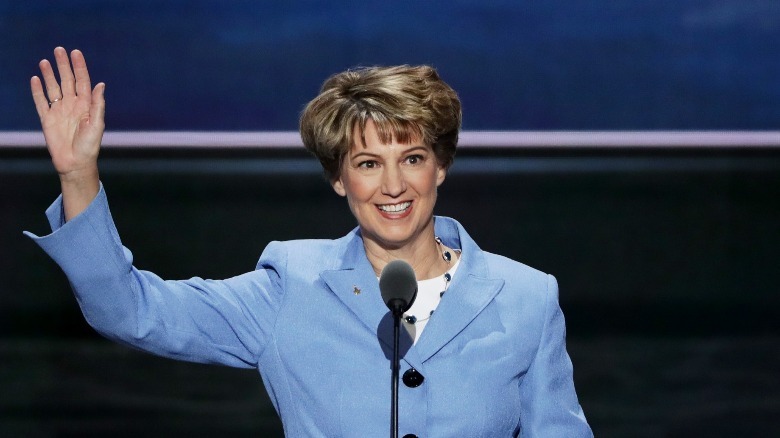The 11 Most Influential Women In NASA History
The history of the United States space program was molded in part by the many women who have not only been launched into orbit aboard spacecraft, but who have also worked tirelessly behind the scenes in making the rocket and shuttle launches mathematically possible. From the more than 50 women launched into space, to the engineers that started the process on paper, women have been an integral part of NASA from the beginning (via History of NASA).
NASA wouldn't have had the many successes over the last decades without the dedication, innovation, and courage of the hundreds of women that they have employed. Let's take a closer look at 11 of them, whose names should be forever etched in our history books
Kitty O'Brien Joyner
The distinction of becoming the first woman engineer at NASA belongs to Kitty O'Brien Joyner, who began her career with the NACA in 1939. Her path to a successful career began after being inspired by her father, an engineer by trade who encouraged Joyner to pursue her passion. Joyner was also the first woman to graduate from the University of Virginia's engineering school.
According to NASA, Joyner faced hurdles getting accepted into school. She successfully sued for admission into a program that was structured for males only, before eventually graduating and earning the prestigious Algernon Sydney Sullivan award (via University of Virginia).
After NACA transitioned to NASA, Joyner helped research and design wind tunnels and wind turbines. She retired from NASA in 1971.
Peggy Whitson
Peggy Whitson worked to develop quite the resume in the realm of space exploration. According to NASA, Whitson began her career with the space agency as a researcher in 1989. She was launched into space in 2002, on a mission to the International Space Station.
Whitson participated in two separate space station missions, each being six months long. On her second mission in 2008, she was the station commander.
Whitson's numerous space missions and time spent aboard the space station yielded in a total of ten space walks, the most of any woman in history. Whitson also has the distinction of spending 665 days in space. This is more than any other person from the United States.
Dorothy Vaughan
High school math teacher Dorothy Vaughan took a position with the National Advisory Committee for Aeronautics (NACA) in 1943. Vaughan thought she would only be at the Langley based facility while the war raged on, but found herself enjoying the work as a mathematician. As an African-American woman at the height of segregation, Vaughan and other women of color were assigned their own unit within a separate part of the building. This "West Area Computing Unit" was composed of all African-American women, save for the supervisors.
While working under two successive white managers, Vaughan's tenacity and hard work paid off. She was promoted to a supervisor position in 1949, making her the first African-American woman to have a managerial role in this setting (via NASA). A decade later, NACA turned into NASA, and segregated facilities within the organization were officially abolished. Vaughan began to work for the Analysis and Computation division, becoming adept at FORTRAN computer programming and contributing to the Scout Launch Vehicle Program.
Mary Jackson
If anyone's struggles show just how far we've come in breaking down racial barriers, it's those faced by Mary Jackson. Born in 1921 in Hampton, Virginia, Jackson was educated during times of racial segregation. Showing a prolific ability in mathematics, Jackson was able to secure rare and special permission to take University of Virginia math and physics classes while attending the segregated Hampton High School (via Biography). Completing these graduate level courses at such a young age led Jackson to pursue her education, earning herself a dual degree in physical science and mathematics from the Hampton Institute in 1942.
Jackson was hired by the predecessor of NASA, the National Advisory Committee for Aeronautics (NACA) in 1951. She was employed as a research mathematician, and her uncanny ability in this field earned her the moniker "human computer."
Sadly, in spite of her efforts, Jackson was still being held back by archaic Jim Crow policies. Discouraged, she had a chance conversation with a supervisor about her struggles. This man offered her a position directly under him and encouraged her to take engineering courses. Jackson did so and began to assume new responsibilities. She was eventually promoted to aeronautical engineer, making Jackson the first African-American female engineer at NASA.
Katherine Johnson
Katherine Johnson was also employed as a "human computer" at NACA in the year 1953. Like her fellow mathematicians Vaughan and Jackson, Johnson was a woman of color who was forced to endure the racial inequalities of the era. Segregated at work in the "West Area Computing Unit," Johnson excelled at her job while working alongside other women of color.
Johnson was not one to let the injustices that surrounded her stop her professional progress, however. Her mathematical ability led to her being absorbed into the NASA program, where she calculated the trajectories of both John Glenn and Alan Shepherd. Glenn was so impressed by Johnson's reputation that he personally asked that she check the computer's results (via Insider).
Johnson later went on to calculate the trajectory of the Apollo 11 moon mission in 1969. After her retirement, she was the recipient of two prestigious awards. According to Solar System, Johnson was awarded the Presidential Medal of Freedom in 2015 by President Barack Obama and the Congressional Gold Medal in 2019.
Nancy Roman
The "Mother of the Hubble Telescope" was born in 1925. From a young age, Roman expressed an intense interest in science, particularly astronomy. In her early teenage years, Roman formed a school astronomy club, in which she and fellow classmates would pour over books written about the various constellations in the night sky. She knew then that she wanted to pursue a career in this field (via Solar System).
After earning her doctorate in astronomy from the University of Chicago in 1949, Roman worked at the Yerkes Observatory at her alma mater before taking a research position with the Naval Research Laboratory. When NASA was later formed, Roman was tapped to head up a program in space astronomy. She was made NASA's first chief of astronomy in 1959 (via Solar System).
In this position, Roman discussed different ways that the universe could be viewed with the numerous fellow astronomers that she interviewed. The idea of launching a telescope on a satellite into space appealed to her, as it would mean we would be getting a view of objects never seen before by humankind. She set to work selling the idea, first with fellow NASA staff, then to lawmakers in D.C. who held the purse strings.
Roman's tireless work on a space telescope continued after her retirement from NASA in 1979. Roman was 65 when the Hubble space telescope was launched into low orbit in April 1990 (via NASA).
Sally Ride
A teacher, children's author, and astronaut, Sally Ride (pictured at the head of this article, and whose helmet you'll see immediately above) is the modern definition of a Renaissance person. With aspirations as a child to be a professional tennis player, Ride found a passion for physics in her teen years. This led to her earning her Bachelor of Science degree in the subject in 1973, before pursuing her Masters of Science and her doctorate in physics from Stanford University (via Solar System Exploration).
Ride wrote herself into the history of space exploration by becoming the first U.S. woman to be launched into outer space. After five years of rigorous training, Ride and four fellow astronauts were launched into space aboard the Challenger space shuttle on June 18, 1983.
Ride was an astronaut aboard another Challenger shuttle mission the following year. She retired from NASA in 1987 to pursue a successful career as a university professor.
Following a desire to help other women shatter barriers in the fields of mathematics and science, Ride founded her own company, Sally Ride Science, in 2001. Drawing from her own experiences as a young woman who was interested in fields dominated by men, Ride's company strived to show the fruits of what diversity can yield.
Ride passed on July 23, 2012 at the age of 61. Out of the many kind words that were spoken of her character and her contributions, former NASA administrator Charles Bolden summed it up in the best way when he stated that "Sally Ride broke barriers with grace and professionalism – and literally changed the face of America's space program" (via Solar System Exploration).
Anna Lee Fisher
While Ride went down in history as the first U.S. woman launched into space, Anna Lee Fisher was the first to break another barrier; the first mother in outer space. According to Space, Fisher was part of the 1978 class of future astronauts that graduated six women, including Ride.
Pregnant with her daughter when approached by NASA to be a mission specialist on a space shuttle mission, Fisher accepted the challenge. After giving birth, she completed an extensive 14 month training regiment before being sent into space with five fellow astronauts aboard the space shuttle Discovery on November 8, 1984. The crew spent nearly eight days in space on the mission that saw the first mother sent among the stars.
After the Challenger disaster in January 1986, Fisher took a lengthy leave of absence from NASA When she returned in 1996, she became the chief of the space station branch. Fisher retired in 2017 (via Insider).
Dr. Mae Jemison
While many women had been sent into space during NASA's shuttle program, no woman of color had been aboard any of the missions until Dr. Mae Jemison became the first African-American woman to do so in 1992. A mission specialist for the Endeavor space shuttle, Jemison and her crew orbited the Earth a total of 127 times during an eight day mission that began on September 12 of that year (via Women's History).
Inspired as a child by Star Trek reruns, Jemison felt her passion for science grow throughout her teenage years. Noticing the absence of women involved in the numerous Apollo missions she saw on television, Jemison was driven to success in academic fields that had previously been staffed by males. Earning her M.D. designation, Jemison went into general practice before joining the space program in 1987.
Teacher, doctor, Peace Corps volunteer, and astronaut. Rounding out Jemison's list of accomplishments is the fulfillment of another childhood dream: being an actress on Star Trek. After being approached by Star Trek: The Next Generation actor LeVar Burton about making an appearance on an episode, Jemison accepted. She played Lt. Palmer in the episode, "Second Chances," becoming the first real astronaut to ever appear on an episode of any of the Star Trek series.
Ellen Ochoa
1993 was the year the United States sent the first Hispanic woman into space. This astronaut, Ellen Ochoa, was the mission specialist aboard the Discovery space shuttle. The space craft launched into orbit in April and was the first of four missions that took Ochoa into space. Her missions included studying solar winds and the impact of the sun's rays on the Earth. Ocha was also aboard the Atlantis in 1994, Discovery in 1999, and again on the Atlantis in her final mission in 2002.
According to Britannica, Ochoa's total time in orbit over each mission exceeded 1,000 hours. On her shuttle Discovery mission in 1999, Ochoa was part of the crew that successfully docked with the International Space Station for the first time.
After her years as an astronaut, Ochoa went on to become the director of the Johnson Space Center. She left this post in 2018 and is now the vice-chair of the National Space Board (via Insider).
Eileen M. Collins
Not to be outdone by the women who paved the way, Eileen Collins became the first woman to pilot a space shuttle in 1995. Logging an impressive 38 days in space, Collins was part of four missions, including a 1997 ride that had her docking with the Russian space station Mir in a trip to distribute supplies to the cosmonauts on board (via Britannica).
Collins not only was the first woman to pilot a space shuttle, but she was also the first woman to command a shuttle mission. Collins was on board and in charge of the Columbia shuttle mission in 1999 that deployed the Chandra X-ray Observatory.
These women are only 11 of the hundreds of women who have enjoyed successful careers in the United States space program. The hurdles each had to cross to even be given a chance were many. Those who persevered helped to shape the future of both space exploration and national defense.

